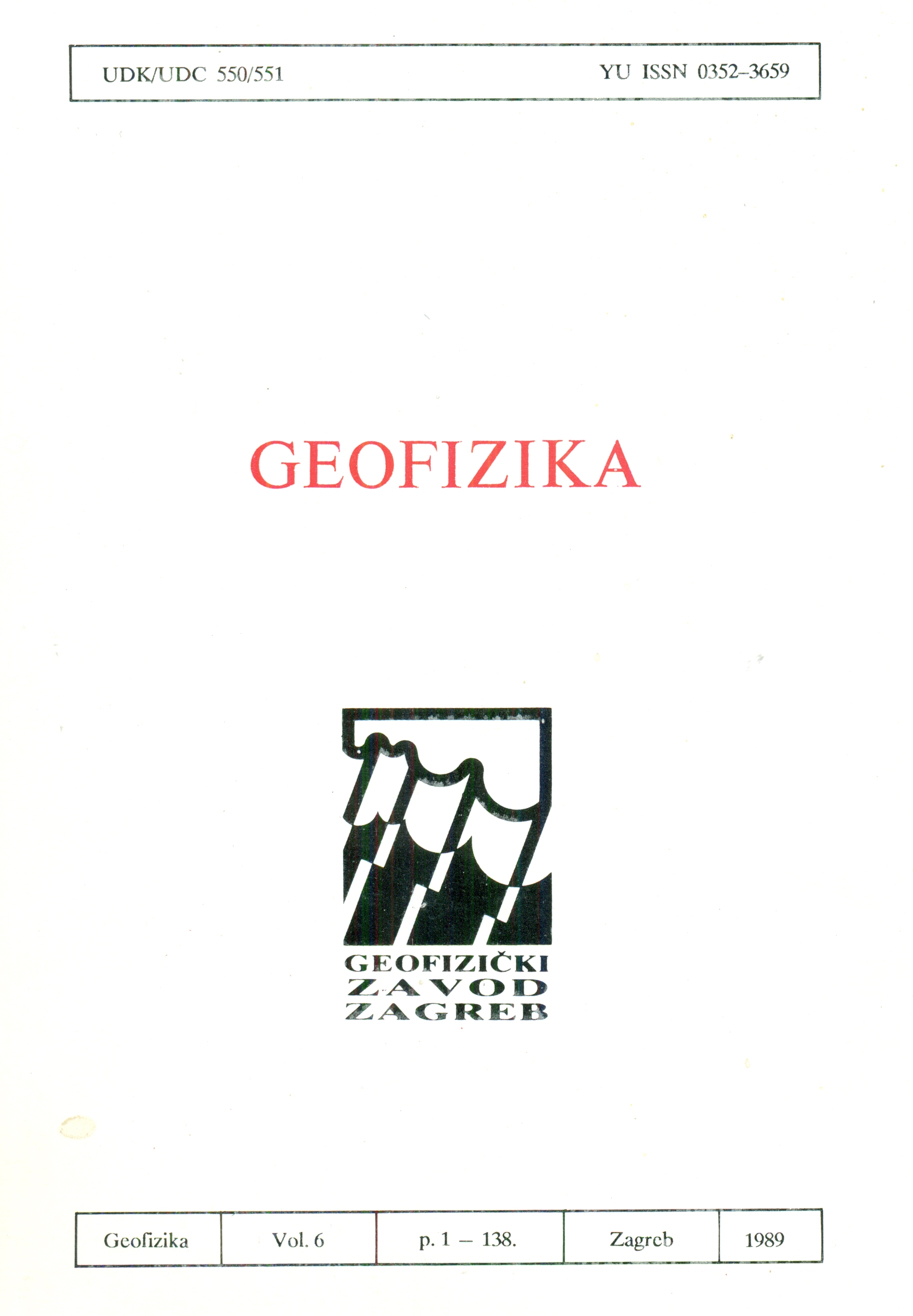Diurnal winds in Senj
(in Croatian)
Abstract
The frequent bora in Senj leaves less time for diurnal periodical winds development. Nevertheless there exist several wind system with a diurnal period. They are pronounced especially on the undisturbed days, when the particular branches of the systems are exchanging or superimposing such as: the sea and land breezes, the upslope and downslope wind, the valley and the mountain wind. All of these diurnal periodic wind systems exist in Senj as a consequence of the sea, land, mountain slope and valley influence (Fig. 1). The order of influence of the mentioned factors is exchanging during a day causing the counterclockwise change of wind directions, which is unusual on the Adriatic coast.
Several approaches were applied in the study of diurnal winds in Senj:
a) A choice of days was made, on the basis of the following criteria: insolation ≥ 12.0 hours, cloudiness in all of the terms < 2/10, the average hourly wind velocity < 5.0 m s-1, and finally the diurnal air pressure amplitude < 4.0 hPa. Only 30 days could fulfill such rigorous criteria during the 1959 – 1967 time interval in Senj. All of the selected days fall within four warm months between May and August.
On the basis of the wind hodograph (Fig. 2) and the diurnal course of the wind direction frequencies (Fig. 3) for the selected days, the following can be concluded:
- during night-time the wind from SE quadrant (called here SE wind) is prevailing; it is combination of the land breeze, the mountain wind blowing from Senjska draga valley and also of the weak bora wind,
- early in the morning the weak wind from NE quadrant (NE wind) prevails, which consist of the downslope wind and the land breeze,
- later during the morning the wind from NW quadrant (NW wind) develops, which is the combination of the sea breeze and the valley wind,
- in the middle of a day the wind from SW quadrant (SW wind) prevails as a combination of the sea breeze and upslope wind.
In the selected days the diurnal winds are developed over the broader area of Senj as well (Tab. 1 and 2).
b) The diurnal and annual frequency distribution of SE, NE, NW and SW wind in all days of time interval 1966 – 1975 is satisfactory presented by isolines on (Figs. 6-9). An obvious and unexpected decrease of the SE, NE, NW and SW frequencies can be found in July. It is the consequence of the diurnal periodic circulation system of a bigger scale, named here as the bay circulation. The bay circulation develops in the bay east from Istria The sea/land breeze and the mountain circulation on the coast on the bay together with the significant island area (Fig. 5) increase the air temperature in the bay with respect to the air temperature south of it during daytime and reduced it in the night. The bay circulation develops in such a way that lower air layer moves from south towards the bay around the middle of a day and in the opposite direction at night. The bay circulation in Senj has a direction parallel to the coast – SSE during daytime and NNW at night. The favorable conditions for the bay circulation in July (Tab. 3) results in the frequency reduction of SE, NE, NW and SW winds in that month.
c) According to some general properties of the sea/land breeze and mountain circulation, a method has been developed for estimation of the prevailing circulation branch in the SE, NE, NW and SW wind. Daily branches of sea/land breeze and mountain circulation have the opposite properties: the sea breeze is more frequent in April than in October, and the upslope and valley wind is more frequent in October than in April. The night branches have just the opposite characteristics too: the land breeze is more frequent in October than in April, but the downslope wind and mountain wind is more frequent in April than in October.
The mentioned features of the sea/land breeze circulation are explained by the warmer land in April and warmer sea in October. The opposite features of the mountain circulation result from more often snow cover in mountains in April, and by heating of the deeper ground layers in April and their cooling in October.
Downloads
Published
Issue
Section
License
Copyright (c) 2021 Geofizika journal

This work is licensed under a Creative Commons Attribution-NonCommercial 4.0 International License.

